My trip to Tahiti was a trip of many firsts. For example, it was the first time I’d ever gotten sick on a plane, and had to spend the flight locked in the tiny bathroom asking my body ‘why god why?!’ was it doing this to me. It was also the first time I was able to dive with manta rays, but I’ll get to that..
Jayne Jenkins, Sue Crowe, Michael Aw from Ocean Geographic and I arrived on the 23rd of June in Papeete at some absolutely ridiculous hour of the morning, and after collecting our bags were told our hotel was within walking distance, so we set off in search of it. Turns out our hotel was NOT within walking distance, especially when you’ve got about 50kg of luggage that you have to drag along with you. Unfortunately, Jayne, Sue and myself learnt this the hard way, and after struggling with our luggage through ditches, up stairs and back through drains, we finally gave up. We were hot and lost (I was still sick from the plane), and all hope of reaching our hotel soon had vanished. This was about the point that we were saved. A lovely mother and daughter in a car pulled up and asked if we needed a lift. They then did two trips with all our luggage to the hotel, where we met Michael who had wisely opted for a taxi, and we finally were able to crawl into bed. We had all managed to keep a sense of humour and loved those two ladies for all their help.
A day after our dramatic arrival into Papeete, we headed back to the airport to fly out to Fakarava (and yes, you pronounce that word exactly how you think you do). The flight there was quick and skies slightly overcast, with the clouds shielding the beautiful blue seas from us as we flew. We landed in some very unexpected weather (rain shower and wind accompanied by a temperature drop), however the mood was high as we headed out to our boat, the French Polynesian Master part of the Master Liveaboard Fleet, a beautiful and spacious live aboard, where I was about to get my first taste of life aboard a liveaboard.
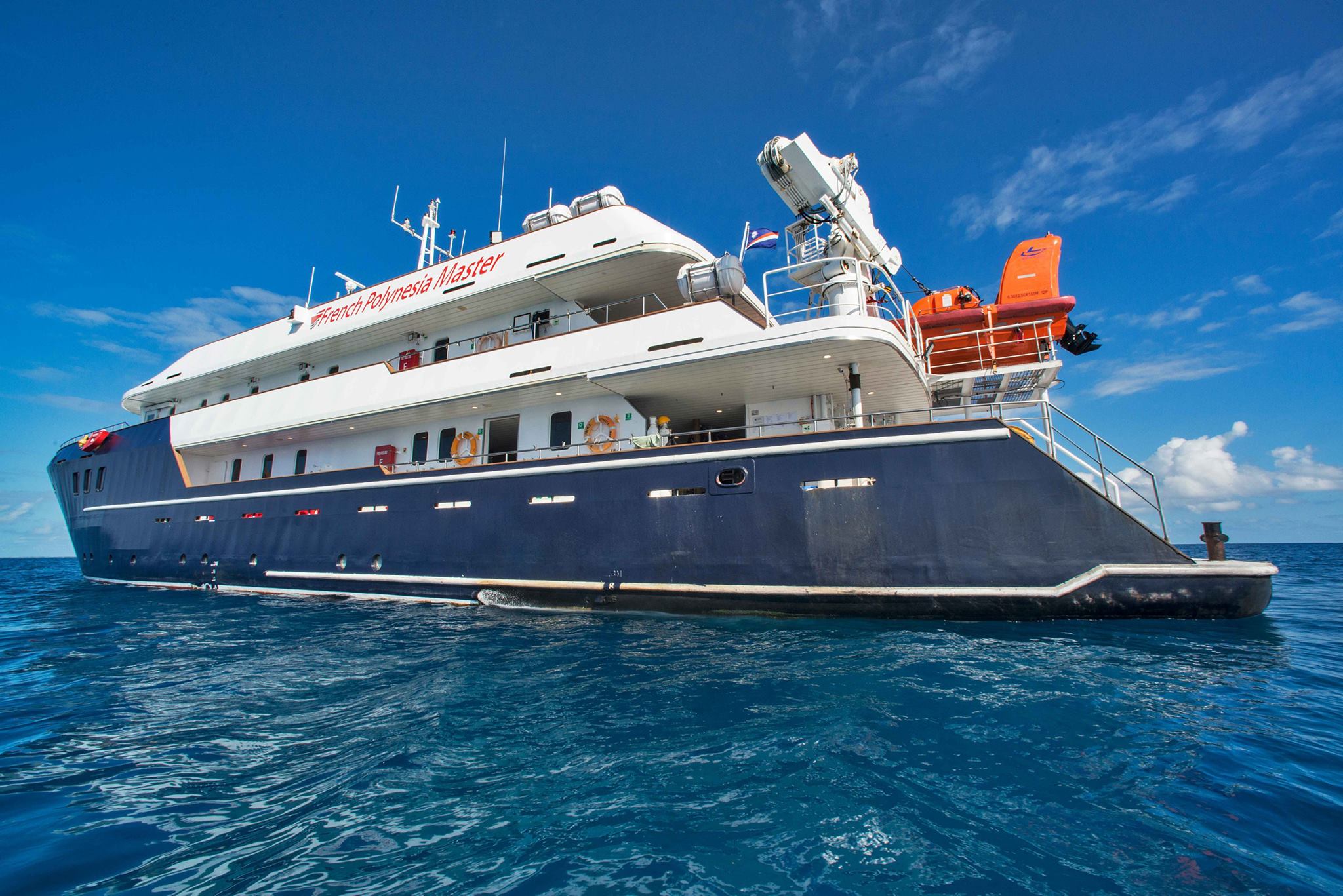
Photo by Jayne Jenkins
We woke up very early for our first dive, although very excited about being in Tahiti there was still a few grumbles about getting up so early for not so calm seas and the potential that we might not be able to dive the site we wanted to, but the weather calmed enough for the boats to get into the channel so off we went. It was worth it. My first dive in Tahiti was one of many firsts for me – my first manta. I’d been anticipating and hoping for this moment for such a long time. The second I saw those giant, graceful, silent beings fly over top of me I not only squealed into my regs, but I cried a little bit with happiness. The mantas were reef manta rays, but the sheer size of them still blew me away. They were so alien, so foreign, so unlike anything else I’ve ever seen on this planet. They cruised around the reef silently moving their wings and staring at the silly wall of divers, goodness only knows what they were thinking as they looked at us. The rest of my dives for the first day continued like this, with a few other ‘firsts’, such as seeing my first great hammerhead, if only briefly and from far away. Another first was finally getting a feel for my new camera from Reef Photo & Video (and Photoshop thanks to Jayne), and actually producing my first photo I could be proud of (see below). Michael AW also gave me the Essential Digital Underwater Photography Masterclass book which has so many helpful hints on underwater photography.
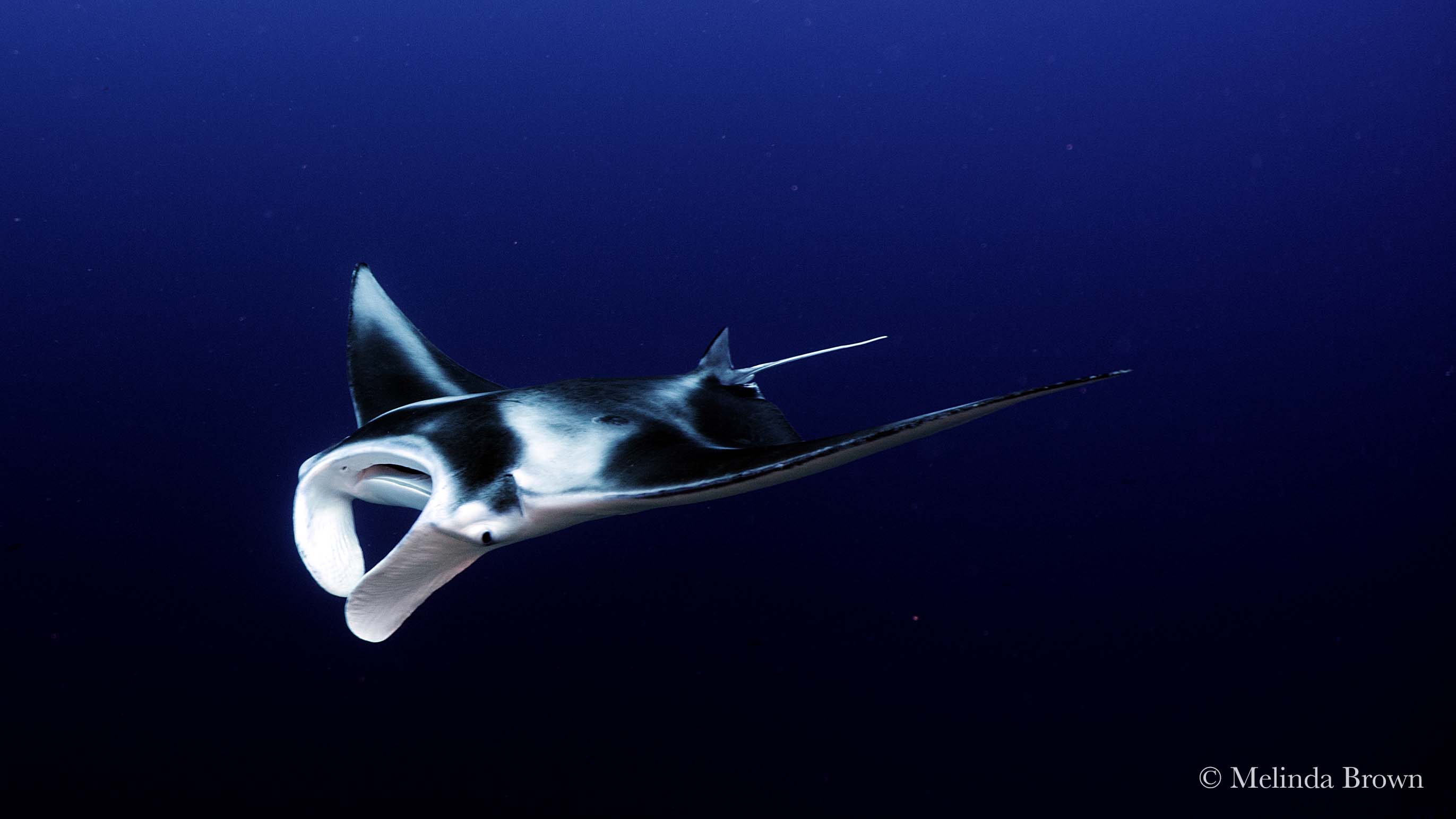
Photo by Melinda Brown
The second day brought not only more mantas into my life, but also a man. Jayne convinced me to do a traditional marriage dance with one of the local dive tender operators on the boat while his friend played and sang the song on guitar. They were practising for our farewell party where they sing and play their local Polynesian folk songs. We all joked that I was now married to him (against my will), however I couldn’t get enough of how the crew on the boat were so musically inclined, bursting into song at any opportunity. I don’t think the marriage will last, but at least the dance was fun. I also learnt to play the local drum.
The diving in Tahiti was something else, shivers of sharks gathered in the channels and cruised the fringes of the reef, eliciting cries of excitement from all the divers present as they crept in closer to have a look at us. We dived in the channels of the atolls mostly on an in-going tide, so we could benefit not only from the better visibility, but from the huge aggregations of elasmobranchs that gathered in the valleys and trenches during the current change. Having previously dived in Fiji and Palau, I thought I knew what ‘a lot of sharks’ looked like but I was wrong. There were more reef sharks in these channels then I’d ever seen in my life. The best part about the huge number of sharks though was the abundance of pups swimming around the reef, and the frequency in which we sighted pregnant females. Baby sharks have to be one of the cutest, and hope inspiring things I have ever seen; they are so perfectly formed and so tiny. Shark populations in general are often discussed in regards to their decline, and the devastating flow on effects it will have on the ecosystems they occupy if they are to disappear from the ocean, so seeing not only pregnant females but the abundance of pups was thrilling.
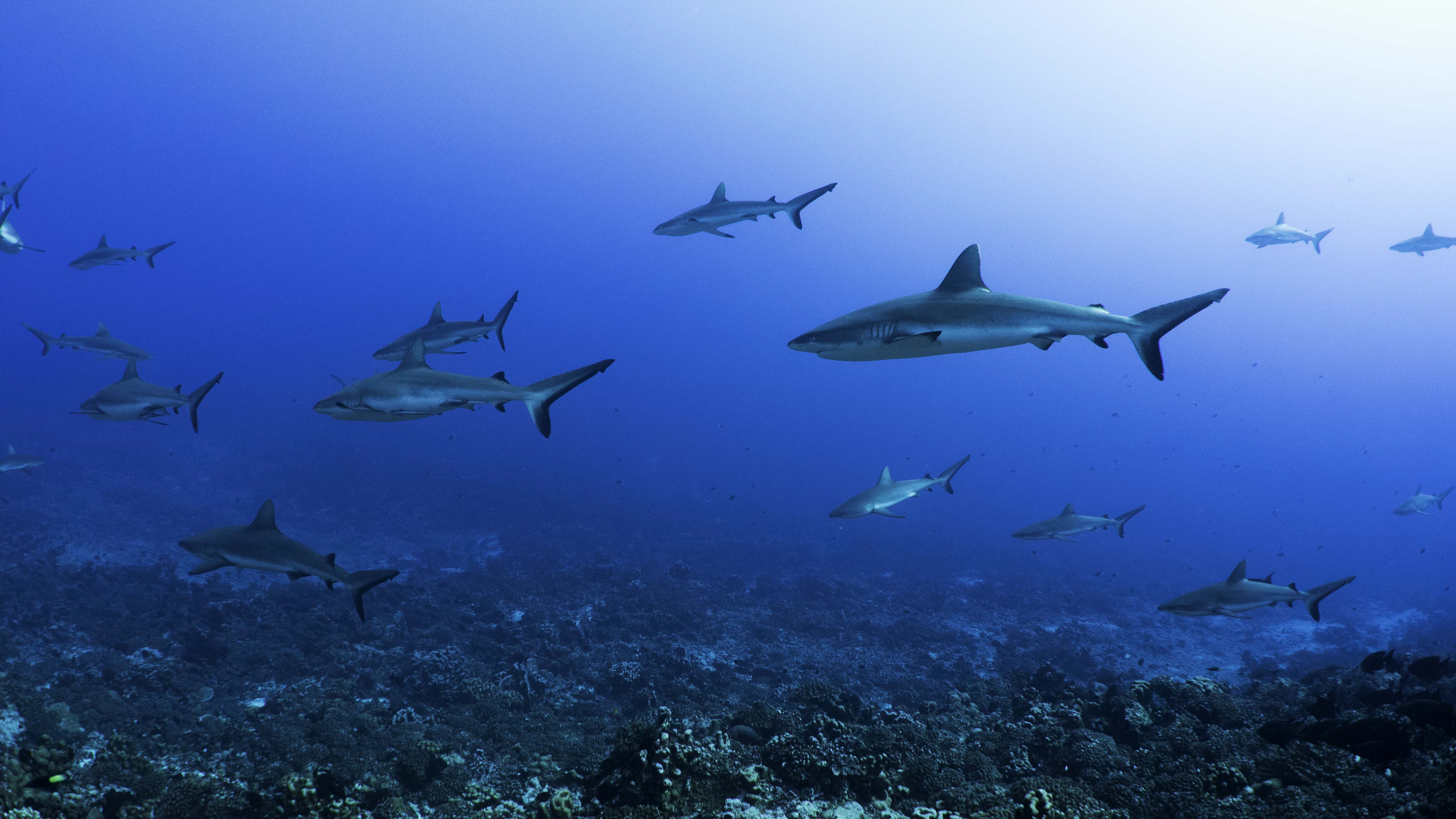
Photo by Melinda Brown
The reason we had ventured all the way to Fakarava however, was to observe the grouper spawning event. Every year, on the full moon in July, approximately 20,000 camouflage groupers (Epinephelus polyphekadion) spawn in the south passage of Fakarava.
Seeing the groupers gather in the passage like that truly was a once in a lifetime event. The 20,000 groupers that gathered there attracted an array of fish, however the most impressive fish present (in my humble opinion) were the reef sharks. During our dives we sighted Laurent Ballesta and his team from Gombessa Expeditions studying these sharks, and according to a paper published in August 2016 by Laurent and his team, Extreme Inverted Trophic Pyramid of Reef Sharks Supported by Spawning Groupers, the 600 sharks present represented two to three times the biomass per hectare documented for any other reef shark aggregations in the world. This abundance of predators inverts the trophic pyramid, meaning that the grouper spawning provides a fantastic feeding opportunity for the sharks and can play a significant role in the maintenance of local inverted pyramids in pristine marine areas, such as Fakarava. Conservation of fish spawning aggregations can help conserve shark populations, especially if combined with shark fishing bans, so witnessing such an incredible event that is assumed to be mostly unaffected by anthropogenic influences really was eye opening, and as an aspiring conservationist it provided a glimpse into how science and research can play a crucial role in conservation of entire ecosystems, not just a single species.
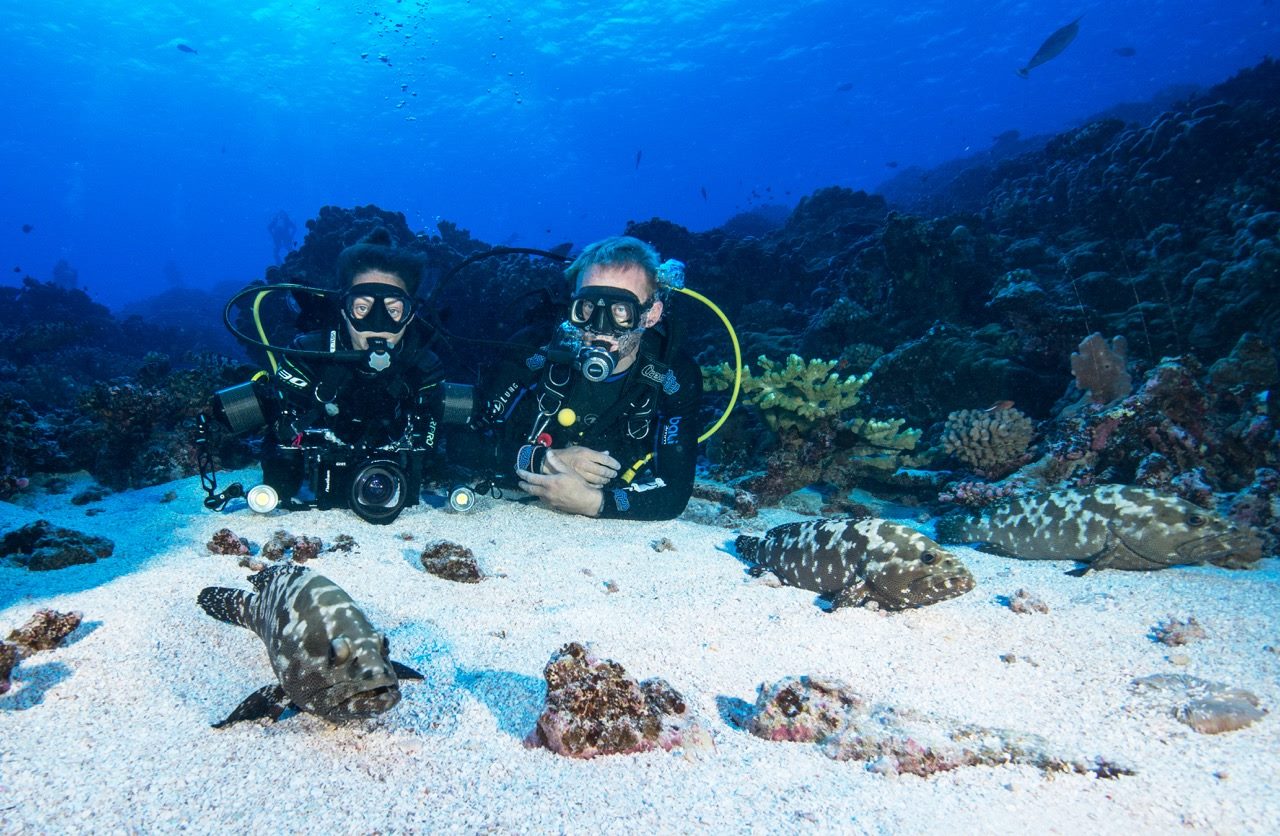
Photo by Jayne Jenkins
The groupers numbers increased each day leading up to the full moon, and they gathered on the reef, some resting on the sea floor, others flashing bright white to warn their fellow male companions that that part of the reef was THEIRS and they were not welcome. They would circle each other, their normally dark, marbled complexion changing dramatically and rapidly to a lighter colour, and raising their jagged fins theatrically, they would charge at each other with their mouths open, biting and tearing at the opposing male. These displays became more and more frequent as the numbers increased from hundreds to thousands, and we began to feel a little bit like we were swimming through grouper soup. As our final days on the French Polynesian Master began to draw to an end, we sadly realised that we would not see the groupers spawn. We were leaving just a few days too early. However, the chance to see those hilariously relaxed, yet irate looking fish was incredible, and I will never look at groupers the same after being exposed to their vivacious personalities.
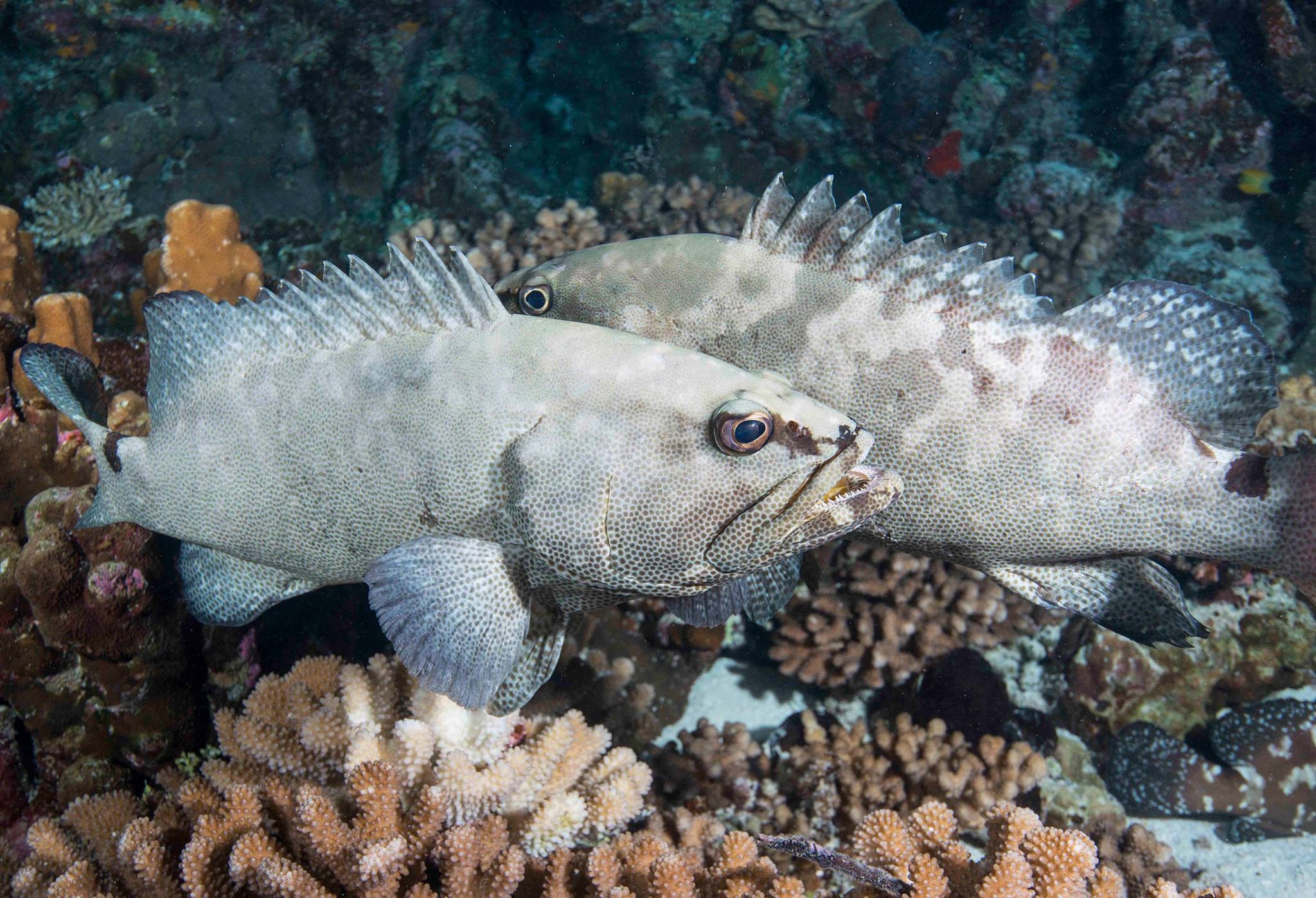
Photo by Jayne Jenkins
The trip was made even better by the amazing dive guides who took care of us so diligently. Sophie, a lovely French girl looked after ‘The Green Team’ which consisted of Jayne, Sue, Michael and myself. Sophie was the epitome of calm and collected on the dives, even during a dive in a 3 – 4 knot current that consisted of most of us clinging on to the sea floor for dear life as the current threatened to rip our masks from our faces, and cameras from our hands. We also had the pleasure of diving with Serge the trip director who has been diving these waters for the past 15 years , who kept on eye on our cheeky Green Team as we all constantly swam in different directions over the reef in search of a new and exciting subjects for our photos. The rest of the dive team provided us with not only a helping hand with everything dive related, but also a lot of laughs, and a lot of memories I will treasure forever.

Photo by Mark Nadeau
I wasn’t sure what to expect in Tahiti, but I can safely say that that trip will always mean the world to me. It’s not often you have so many huge ‘firsts’ happen in one week, and I am definitely travelling home as one very happy and satisfied diver; and I have Michael Aw of Ocean Geographic and Master Liveaboards to thank for organising this incredible trip. I learnt a lot about my capabilities as a diver in some of those challenging currents, and I learnt even more about photography. Being able to witness such incredible natural events such as the grouper and shark aggregations was astounding, and it’s fuelled my love for ethology (the study of animal behaviour) even more.